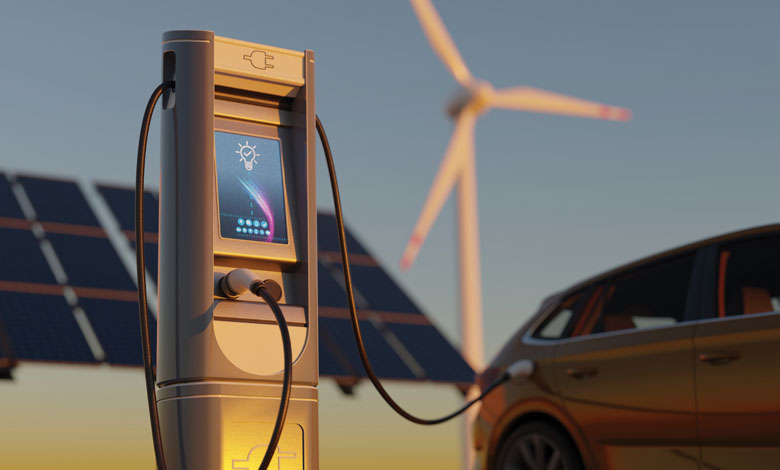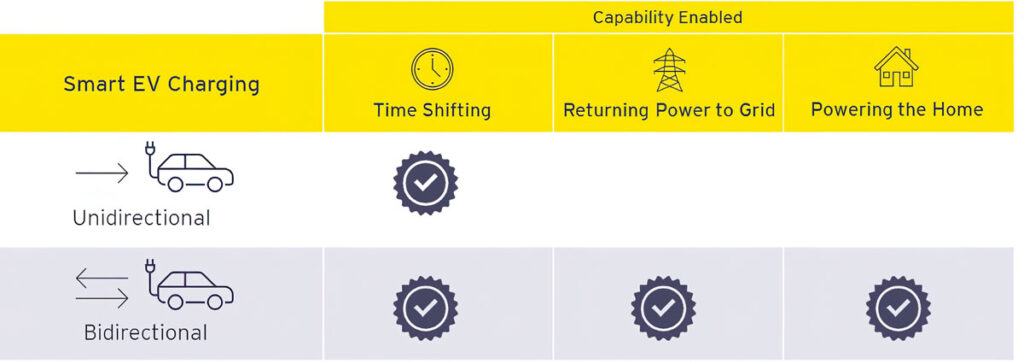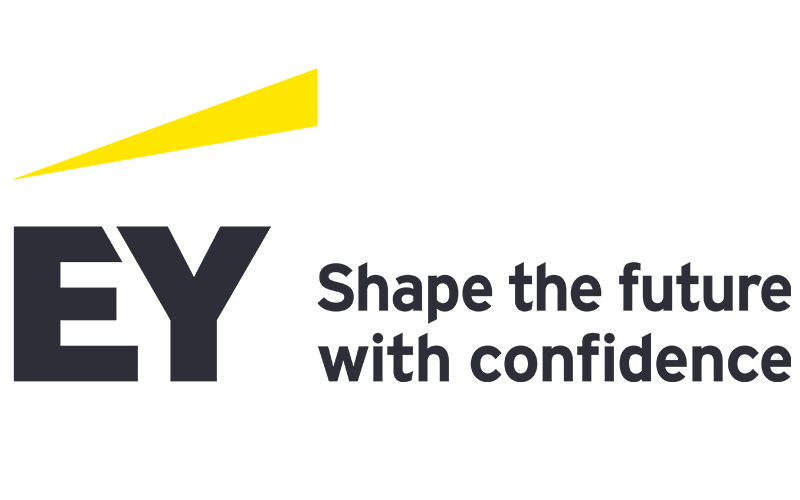
Secure, clean, and affordable energy for Europe
14th October 2025
Navigating the EU’s energy transition
14th October 2025The role of smart charging and V2G

The energy system in Ireland is undergoing a fundamental transformation driven by decarbonisation, writes David Cashman, EY Ireland Business Consulting Partner.
On the supply side, the shift is already well underway; renewable sources now account for an average of 39 per cent of electricity generation. On the demand side, the electrification of heating and transport remains a central priority. In 2025, electric vehicles (EVs) and heat pumps contribute just 4 per cent to total demand, but this is expected to rise significantly to 18 per cent by 2034, driving a projected 45 per cent increase in overall demand relative to 2023 .
The need for flexibility
Meeting this surge in demand while managing renewable variability presents a dual challenge. As dispatchable sources are replaced by intermittent wind and solar, system flexibility becomes critical. Ireland’s Climate Action Plan (CAP) 2024 set an ambitious target of between 20 per cent and 30 per cent flexibility by 2030 to support the renewable transition.
The potential for EV flexibility
Transport electrification is not only reshaping demand, it also holds untapped potential for system flexibility. With approximately 148,000 EVs on Irish roads, and CAP targets calling for 845,000 private and 82,000 commercial EVs by 2030, the scale of this transformation is significant. Research published this year by EY and Eurelectric has explored how EVs can provide grid balancing solutions, accelerate renewable energy adoption as well as reduce the total cost of ownership for consumers.
Unlocking EV flexibility
The technologies enabling this flexibility fall under two main categories – unidirectional smart charging and bi-directional vehicle-to-grid (V2G).
Unidirectional (V1G): Smart charging optimises the time of charging through smart algorithms, moving it away from peaks to lower demand periods overnight – and times of high renewable generation in its most optimised state. Customers benefit from lower prices via time-of-use (ToU) tariffs that reward off-peak usage. As ToU tariffs become more dynamic to network conditions, savings from optimised smart charging has the potential to grow.
Bidirectional: Bidirectional charging goes further, enabling V2G and vehicle-to-home (V2H) capabilities. V2G technology transforms EVs from passive consumers of energy into decentralised energy storage units and active participants in the grid by facilitating the flow of power between the vehicle and the grid. V2H capabilities provide network resilience, acting as on-site back-up generation to customers in the event of outages, and enable the optimisation of self-generation when integrated with microgeneration such as rooftop solar PV.

Benefits of unidirectional and bidirectional technologies
V1G and V2G present a clear win-win scenario for both system operators and customers. Here are some interesting findings from The EY-Eurelectric report outlines some interesting findings.
For system operators, V1G and V2G can contribute to peak demand shaving, reduction in renewable curtailment, and deferral/avoidance of network reinforcement. EY estimates that by 2030, the total EV battery capacity in Europe could be sufficient to power 30 million homes each year. Furthermore, by 2040, V2G technology could enable these batteries to store and reinject 10 per cent of Europe’s power.
For customers, these technologies can help overcome the upfront cost barriers associated with EVs and incentivising ownership. Through aggregation services, individual customers may provide flexibility services to system operators. EY estimates that by switching to an equivalent EV, customers could achieve annual savings of €885 for compact segment cars, €1,229 for family cars vehicles and €1,760 for SUVs by charging during off-peak hours and selling energy back to the grid (based on the UK market).
Next steps
Unlocking EV flexibility will require making the most of existing V1G capabilities and laying the groundwork for the future V2G potential. Critical actions include:
- Policy and market alignment: Implementing policies that facilitate uptake and flexibility participation, aligned to EU directives (including the Electric Market Directive and Regulation).
- Frameworks and incentives: Translating regulations into effective frameworks with the right incentives to encourage participation (e.g., avoiding the double taxation of energy storage);
- Technology solutions: Smart technology, reliable infrastructure, and standardised data sharing unlock new possibilities in energy. Paired with AI-driven insights, these solutions put households and businesses in control of their energy future.
- Engagement: Education and advocacy efforts empower customers – both households and businesses – to actively participate in driving the energy transition and maximising the use of existing V1G and promoting the uptake of V2G technologies to provide flexibility.
- Trust: Customer trust is critical to underpin EV flexibility participation. The use of customer data to enable AI applications that will facilitate flexibility will need to be leveraged in a transparent manner.
W: www.ey.com

